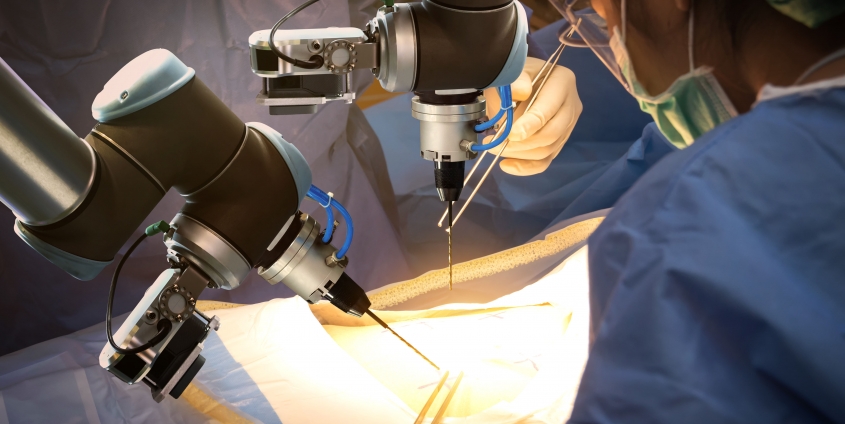Robots set to learn how to provide better assistance during surgery
Minimally invasive surgery has many advantages for patients and surgical teams, such as shorter recovery times, lower post-operative complication rates, higher patient acceptance rates and increased cost efficiency. One key area here is interventional radiology, where external imaging equipment is used to guide the surgical instruments through the body. Robots can support in this task. However, those who believe that robots “operate” independently are (as yet) mistaken: The robot systems available today are pure tele-operators or mere assistants for holding and targeting tools; that’s all they can do. Now, a research project led by the University of Klagenfurt wants to explore additional advantages of “operating robots” and increase their autonomy when it comes to supporting surgeons.
“At present, robots used in surgery can only limit or correct human actions”, the project’s lead scientist Jan Steinbrener (Department of Smart Systems Technologies) explains. This corresponds to the autonomy levels 0 and 1. Advancing to the next stage will involve overcoming significant challenges, and not only the technological kind.
“Let us imagine an operation on soft tissue areas, which can often entail unforeseen organ movements. Using the current technology, the attending surgeon has to be constantly watchful so that she can intervene if something goes wrong. This means that the benefits of automation are severely limited”, Steinbrener explains further. A safe and effective robotic system (working at autonomy level 2) must therefore not only be able to perform the task under challenging and constantly fluctuating conditions, but must also recognise when human intervention is necessary. Steinbrener adds: “If the ‘perceived’ uncertainty of the robot exceeds a defined threshold value, the robot must reliably detect this and alert a supervising surgeon.” Irrespective of the technological challenges, legal and ethical issues should also always be considered in this context.
The objective of the AIMRobot project is to pave the way for the next generation of robotic surgery systems capable of autonomy at level 2 or higher. This will require research and development efforts on many different levels, such as: artificial intelligence to ensure that images and potential image errors are correctly interpreted, and algorithms for modular multi-sensor fusion that can use the data from all sensors, including uncertainties, to determine the precise position of the surgical instrument inside the body.
The project, which is financed by the Bridge Young Scientists programme organised by the Austrian Research Promotion Agency (FFG), is managed as a cooperation between the Department of Smart Systems Technologies at the University of Klagenfurt and iSYS Medizintechnik GmbH based in Wattens. The results are expected by mid-2023.










 zapp2photo/Adobestock.com
zapp2photo/Adobestock.com
